Best 8 Home Improvement Loans in 2021
Whether you are staring at a leaking roof that is taking a toll on your ceiling or just want an upgrade to a new garage or build a pool, home improvements have three key resultant effects. They make your house more habitable, they improve your family’s quality of life and, more importantly, push up the value of your property.
Most of these, however, require significant financial commitments in the range of tens of thousands of pounds that you might not have in your savings account. So what happens in the case of time-sensitive repairs and improvements? You are forced to turn to the home improvement loans.
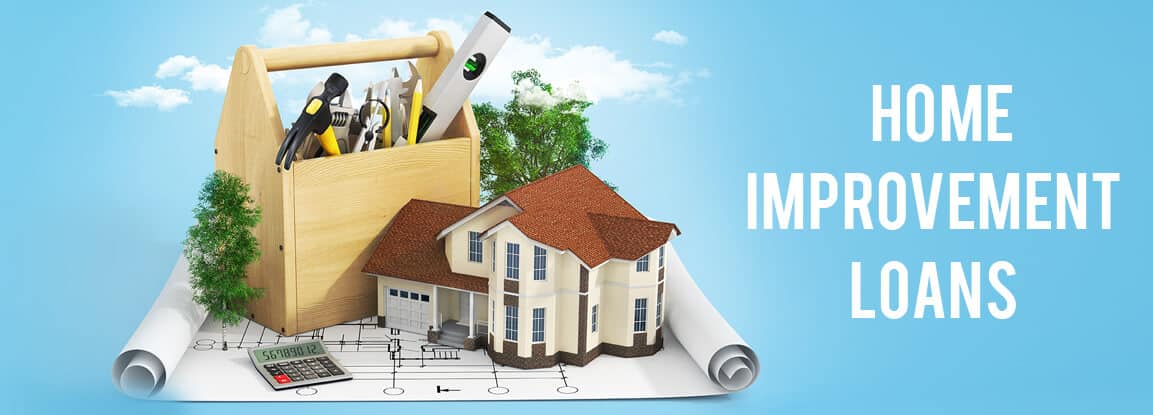
The upside to these loans is that they are readily available with most banks, building societies, mortgage service providers and loan supermarkets. Some will even have the cash deposited into your account in one or two days after loan approval. On the flip side, however, different loans carry with them a different and complicated set of terms and conditions like repayment amounts, interest rates, and associated fee calculations that you must familiarize yourself with before taking up a home improvement loan.
To help you sort these factors, we have come up with this ultimate guide that helps you understand the different types of home improvement loans at your disposal, helps you decide whether you need one, compares the best home improvement loan offers for the years and opens you up to alternative sources of financing. We start by exploring the different types of loans.
-
-
Types of home improvement loans:
Home equity loansHome equity line of credit (HELOC)Personal loan Home equity loans refer to a lump cash advance offered by your lender of mortgage service provider against your home equity. For instance, if you had a $300,000 mortgage and have already cleared $150,000, you can apply for a home equity loan to make home improvements or other adjustments against this equity share. A home equity loan works like a mortgage in the sense that it attracts low and fixed interest rates with extended repayment periods. The downside to taking a home equity loan for home improvement is that you will still have to pay all the loan fees associated with the first mortgage like origination, appraisal and origination fees.
Home equity loans refer to a lump cash advance offered by your lender of mortgage service provider against your home equity. For instance, if you had a $300,000 mortgage and have already cleared $150,000, you can apply for a home equity loan to make home improvements or other adjustments against this equity share. A home equity loan works like a mortgage in the sense that it attracts low and fixed interest rates with extended repayment periods. The downside to taking a home equity loan for home improvement is that you will still have to pay all the loan fees associated with the first mortgage like origination, appraisal and origination fees. The home equity line of credit commonly referred to as HELOC, is in many ways similar to an ordinary home equity loan, safe for the fact that it doesn’t involve a lump sum cash advance but a line of credit that you can borrow against and repay numerous times. Think of it as a credit card against your home equity. The interest rates are largely variable, though most HELOC lenders are currently offered fixed rates for a specified number of years. As in the case of a credit card advance, you won’t have to pay the mortgage associated fees. But unlike a credit card, most lenders have a minimum borrowing limit with most averaging $25,000.
The home equity line of credit commonly referred to as HELOC, is in many ways similar to an ordinary home equity loan, safe for the fact that it doesn’t involve a lump sum cash advance but a line of credit that you can borrow against and repay numerous times. Think of it as a credit card against your home equity. The interest rates are largely variable, though most HELOC lenders are currently offered fixed rates for a specified number of years. As in the case of a credit card advance, you won’t have to pay the mortgage associated fees. But unlike a credit card, most lenders have a minimum borrowing limit with most averaging $25,000. You can also apply for an unsecured personal loan and use it for home improvements and upgrades. The process is however different and more intrusive as lenders poke into your credit history, your average incomes and number of income streams as well as any other outstanding loans to assess your ability to repay the loan. Key differences between a personal loan and home equity loans include the fact that personal loans attract higher interest rates – up to 30% as they are unsecured. Plus they also have shorter repayment periods – often below 5 years.
You can also apply for an unsecured personal loan and use it for home improvements and upgrades. The process is however different and more intrusive as lenders poke into your credit history, your average incomes and number of income streams as well as any other outstanding loans to assess your ability to repay the loan. Key differences between a personal loan and home equity loans include the fact that personal loans attract higher interest rates – up to 30% as they are unsecured. Plus they also have shorter repayment periods – often below 5 years.Why do you need a home improvement loan?
I. Sort emergency repairs
A leaking roof or a flooded family home can’t wait for months as you save for repairs. These are time-sensitive emergencies that if left unattended for prolonged periods will only deteriorate and push up the repair costs. The readily available home improvement loans, therefore, come in handy in helping clear repair this and reduce further damage.
II. Sort repairs that you have been procrastinating on
You may also want to apply for a home improvement loan to conduct necessary but non-emergency repairs that you probably have been procrastinating on. For instance, have you been looking to build another garage or remodel the kitchen or your home’s landscape but never seem to save enough for the costly project? A home equity loan can come in handy.
III. Add value to a home before selling
You may also want to consider a home improvement loan to conduct major repairs and upgrades to a home before listing it for sale. In most cases, these improvements go a long way in helping push up the value of the home. We however only advise you to conduct these repairs if the amounts you hope to recoup from the value increase outweighs the loan costs.
IV. Make home improvements that make it more habitable
You can also consider taking a home loan to conduct repairs and upgrades that make your house more habitable. These may include cooling and heating system repairs and upgrades or any other that is geared towards making your family home more hospitable.
What are the pros and cons of using home improvement loans?
Pros
- Home equity loans have affordable and fixed interest rates
- Home equity loans have extended repayment periods
- The don’t eat into your savings
- Readily available to help sort time-sensitive repairs and upgrades
Cons
- May be expensive in the long run – even at the reduced interest rates
- Puts your home at risk of foreclosure in case of default
- Most, especially HELOCs, have variable interests that may rise to unsustainable levels in future
Criteria used to come up with the best home improvement loans in the U.K:
- Minimum and maximum loan limits
- Annualized interest rates/representative APR
- Loan repayment periods
- Type of interest rate; fixed or variable
- Terms of eligibility
- Total loan cost; both the interest and associated fees
- Registration and regulation of the lender
- Customer support
- Buy out/ bulk repayments terms like discounted interest
Best home improvement loans: Reviewer’s choice
Reviewers Choice
M&S Bank RatingAvailable Loan Amount£1,000 - £25,000Available Term Length7 yearsRepresentative APR2.9%APRSainsbury’s Bank
RatingAvailable Loan Amount£1,000 - £25,000Available Term Length7 yearsRepresentative APR2.9%APRSainsbury’s Bank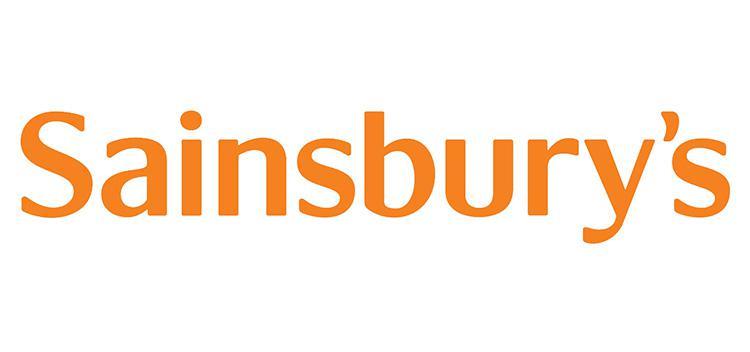 RatingAvailable Loan Amount£1,000 - 40,000Available Term Length7 YearsRepresentative APR2.9%APRNatWest Bank
RatingAvailable Loan Amount£1,000 - 40,000Available Term Length7 YearsRepresentative APR2.9%APRNatWest Bank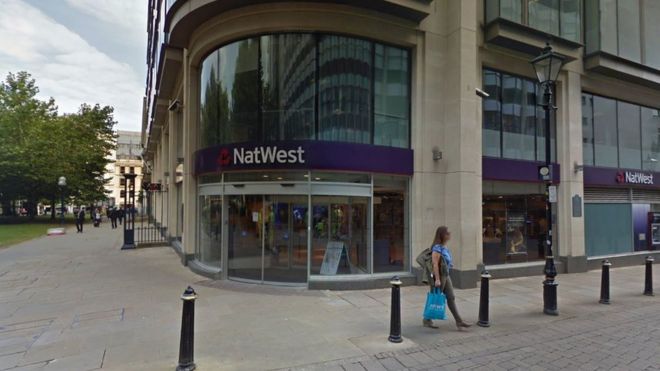 RatingAvailable Loan Amount£1,000 - £50,000Available Term Length2 to 8 yearsRepresentative APR3.4% APRHitachi Capital
RatingAvailable Loan Amount£1,000 - £50,000Available Term Length2 to 8 yearsRepresentative APR3.4% APRHitachi Capital RatingAvailable Loan Amount£1,000 - £25,000Available Term Length2 and 5 yearsRepresentative APR3.2% APRAA Non-member Loan
RatingAvailable Loan Amount£1,000 - £25,000Available Term Length2 and 5 yearsRepresentative APR3.2% APRAA Non-member Loan RatingAvailable Loan Amount£1,000 - £25,000Available Term Length7 yearsRepresentative APRAPR of 3.1%.
RatingAvailable Loan Amount£1,000 - £25,000Available Term Length7 yearsRepresentative APRAPR of 3.1%.Best home improvement loans for 2021:
1. M&S Bank Personal Loan – up to £25,000 at 2.9%APR
M$S bank’s loans top our list of home improvement loans due to the fact that they have attractively high maximum loan limits and some of the lowest loan costs.
The minimum you can borrow here starts at £1,000 and you will have between 1 and 7 years to repay these amounts. But to apply for this secured loan, you must be a homeowner above 18 years and a permanent UK resident. You must also have a minimum annual income of £10,000 with a good credit score rating.
The interest rates for the fixed term loan are fixed and the monthly repayments predetermined during loan application and approval. You should, however, note that the minimum 2.9% APR is only available for amounts between £7,500 and £20,000 while the rest are subject to individualized loan assessments.
Our Rating

- Lowest loan APRs
- The interest rates are fixed helping you determine amounts payable early on
- Extended repayment periods of up to 7 years
- You need a good credit score to qualify
- Secured against your home thus risking foreclosure in case you default
2.Sainsbury’s Bank personal loan for Nectar cardholders – up to £40,000 at 2.9%APR
At £40,000, Sainsbury bank maintains some of the highest maximum loan amounts. It also has relatively attractive terms of engagement like the fixed 2.9% annual APR with no additional fees.
You can also borrow as little as £1,000 with your home serving as collateral. Not to mention their extended loan repayment periods of up to seven years and fixed monthly loan repayment installments. There is a catch though as these loans are only available to existing Sainsbury Bank account holders above 18 years with a good credit rating and a minimum annual income of £7,500.
Our Rating

- High maximum loan limits and friendly processing terms
- No hidden and additional loan costs other than the interest
- Offers extended loan repayment periods
- Only available to Sainsbury bank existing customers
- Not available to bad credit borrowers
3. AA Non-member Loan – up to £25,000 at 3.1% APR
You don’t need to be an active AA Bank customer to qualify for their friendly home improvement loan of between £1,000 and £25,000 that attracts an annualized APR of 3.1%.
You must, however, have a stellar credit history, good credit score, a permanent UK resident and homeowner above 21 years. More importantly, you must have a minimum annual income of £12,000. The relatively low and fixed interest rate is only available for personal loan amounts of above £7,500 with the rest being subjected to individualized but fixed rates based on personal circumstances.
Our Rating

- Open to all UK residents and not just existing AA customers
- The interest rates are fixed ensuring you understand the loan repayment amounts beforehand
- Straightforward application process and fast loan turnaround
- Strict on credit score requirements
4. Hitachi Personal Loan – up to £25,000 at 3.2% APR
Hitachi Personal Finance gives you access to home improvement loans of between £1,000 and £25,000 at the friendly fixed interest rates of up to 3.2% per annum.
The rates, however, are only available for loans above £7,500 with lower loan requirements being subjected to negotiable fixed rates and monthly installments. To qualify for a loan with the lender, you will need to be a Permanent U.K resident and homeowner above 21 years and have a good credit score.
The primary difference between Hitachi and the rest of the lenders mentioned above is that the lender maintains relatively lower loan repayment periods of between 2 and 5 years.
Our Rating

- Relatively competitive fixed interest rates
- Fast loan application and processing
- The interests rates are fixed and will not change during the life of the loan
- The short repayment period translates to higher monthly installments
- You won't always qualify for the high loanlimit
5. NatWest Existing Member Personal Loan – up to £50,000 at 3.4% APR
NatWest maintains the highest maximum home improvement loan of between £1,000 and £50,000 and also the most extended loan repayment periods that range from 2 to 8 years.
At 18 years, the lender can be said to be maintaining one of the lowest minimum age requirements for the loan applications. Other qualification criteria that the banker considers when vetting your eligibility for the loan include whether you are permanent UK resident that has a good credit score.
The loans are however biased towards existing NatWest customers that have either maintained a current account for 3+ months or credit card/mortgage account for more than six months. You should also note that their 3.4% annual APR is only applicable for loans between £7,500 and £19,950 with the rest being subject to more personalized evaluations and customized fixed rates.
Our Rating

- Maintains fixed and relatively competitive interest rates
- Presents you with the longest loan repayment periods
- Exposes you to higher loan limits if you meet the eligibility criteria
- Only available to existing NatWest customers
- High loan limit is only available to creditworthy borrowers
6. Post Office Money Personal loan – up to £25,000 at 3.1% APR
Post Office Money gives you access to home improvement loans of between £1,000 and £25,000 at a highly competitive interest rate of 3.1%. And you will have up to 7 years to repay this loan if you meet their fairly flexible eligibility criteria.
This includes such factors as being a permanent UK resident above and homeowner above 21 years. More importantly, you must have a good credit score and earn a minimum £12,000 per annum. Some of the perks of the Post Office loan is that the interest rates here are fixed ensuring that you understand how much you owe the brand beforehand.
Our Rating
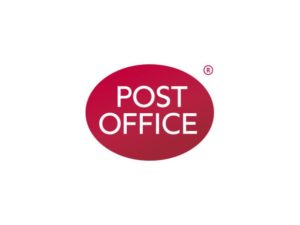
- Highly competitive and fixed interest rates
- Maintains a fairly extended repayment period of up to seven years
- Straightforward online loan application and fast processing
- The attractive 3.1% APR is only available for loans above £15,000
- High loan limits require a strong credit score
7. Avant Credit loan for homeowners – up to £20,000 at 11.8% APR
The AvantCredit personal loan is specially tailored to suit individuals looking for home improvement loans but have a poor or bad credit score that is unacceptable to most other lenders.
In advancing you this loan, Avant considers more than just the credit score and will only conduct a soft search on your credit history when assessing your eligibility. The basic qualification requirements for this loan include the fact that you must be above 25 years, a permanent UK resident that owns a home and with a minimum annual income of £15,000.
The upsides to the AvantCredit loan is that it is most suitable for home repair emergencies as it has the fastest loan processing where the loan will the deposited into your account the same day. This convenience is relatively expensive as you will have to contend with their high annual APR that starts at 11.8% for a maximum loan limit of £20,000 and a repayment period of between 3 and 6 years.
Our Rating

- Allows you access to emergency home improvement loans even with a bad credit score
- Fastest loan processing turnaround- often same-day deposits
- Less stringent loan qualification limits
- One might consider their 11.8% interest rates rather high
- Low loan limits
8. 1st Stop Homeowner Plus – up to £15,000 at 28.5% APR (variable)
The homeowner Plus loan offered by 1st Stop Personal loans is specially designed to suit homeowners who have a bad or poor credit score and still don’t wish to list their home as collateral.
It is thus an unsecured home improvement loan and hence the high interests of up to 28.5%.To qualify for this loan you must a UK resident and homeowner with a minimum annual income of £15,000 and above 21 years. And you can only apply for a loan in the range of £2,000 and £15,000 with repayment duration of between 2 and 6 years.
Our Rating

- No risk of losing your home in case you default on the loan
- You still get access to home improvement loan even with a poor credit score
- Offers fast turnaround in processing and same-day deposits
- The interest rates are considerably steep
- Low maximum loan limit
What are the alternative sources of funding a home improvement project in the U.K?
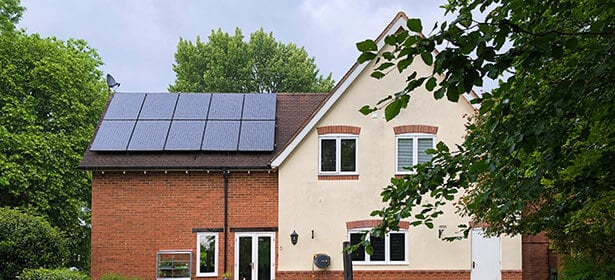
- Credit cards
If you have a relatively high credit limit or access to multiple credit cards with decent limits, you may consider maxing one or all to cater to the home improvement costs. You will end up paying higher interest with a short repayment period compared to taking up a home equity loan but you, on the other hand, don’t have to risk the loss of your home in case of defaults.
- Peer to peer lending platforms
There are numerous peer to peer lending platforms from whence you can source home improvement loans of up to £40,000. These have faster turnaround times and most offer unsecured loans while demanding loan security that doesn’t necessarily have to be your home. They also have more flexible repayment terms and even annual interests with minimal to zero loan processing fees and other associated charges.
- Mortgage refinance
If you have already repaid a significant portion of your mortgage, you may contemplate asking for a cash-out refinance from your lender. This involves taking a higher mortgage than your current balance and using the funds to fund the remaining balance with the excess amounts being geared towards catering for the home improvements. This comes in handy if the interest rates have since dropped and you stand to benefits from lower interest with a new mortgage than what you are currently paying.
Bottom line
Home improvement loans come in handy in helping you sort emergency repairs or carry out upgrades that either help make your home more habitable or push up its value when prepping it for a sale. In either case, you need access to providers with readily available and affordable loans. In such a case, and depending on such factors as the equity you have on your home, your credit score and prevailing mortgage and interest rates, you might want to consider going for the home equity loans, the home equity line of credit (HELOC) or a personal loan. But if hatyou have a bad or poor credit score, you will want to settle with lending service providers that specialize in poor credit score borrowers or turn to alternative ways of funding the home repair or upgrade project like peer to peer lending platforms and mortgage refinancing.
FAQs
What is the difference between a home equity loan and a home equity line of credit?
A home equity loan refers to a lump sum (and one time) cash advance given to a homeowner to help them fund emergency repairs and upgrades. A home equity line of credit, on the other hand, works like a credit card that allows borrowing against your home equity and repaying as many times as you possibly can. A home equity loan adopts a relatively rigid and expensive application process but carries less interest rate compared to the line of credit that has no application fees but carries higher interests and shorter repayment periods.
How much can I get for a home improvement loan?
The loan maximum amount you can receive for a home improvement loan is dependent on such factors as your credit history and score, home equity and the maximum amounts set by the specific lender. To access higher limits, you will need a stellar credit score and borrowing history and high equity on your home.
What is the average interest rate for a home improvement loan?
There is no standard interest rate for the different home improvement loans and lenders are free to express their discretion in setting individual interests. You can, however, expect home loans that are secured against your equity in a home to average 3% APR. Unsecured loans, on the other hand, can extend well above the 30% APR per annum.
How should I use the home improvement funds?
You are advised to only use the home improvement loan to advance the appeal of your home through repairs and upgrades that help improve its value or make it more habitable.
What is the best of long term home equity loan and short term savings personal account?
Key differences between home equity loans and short term personal savings include the fact that the latter attract higher interests and can be either secured or unsecured. In choosing between the two and making the best home improvement loan decision you have to take these factors into account. For instance, if you are looking for low interest and low monthly payments over a long time, consider the home equity loans but if you are after a short repayment period go for the personal loans.
Types of Loan – A-Z Directory

Edith Muthoni
Edith Muthoni
View all posts by Edith MuthoniEdith is an investment writer, trader, and personal finance coach specializing in investments advice around the fintech niche. Her fields of expertise include stocks, commodities, forex, indices, bonds, and cryptocurrency investments. She holds a Masters degree in Economics with years of experience as a banker-cum-investment analyst. She is currently the chief editor, learnbonds.com where she specializes in spotting investment opportunities in the emerging financial technology scene and coming up with practical strategies for their exploitation. She also helps her clients identify and take advantage of investment opportunities in the disruptive Fintech world.
Latest News
Halifax Share Dealing Review
If you’re looking for a low-cost share dealing platform that makes it super easy to buy and sell stocks, ETFs, and funds, it might be worth considering Halifax. You don’t need to have a current account with the provider, and getting started takes just minutes. In this article, we review the ins and outs of...
UK Banks Approved Nearly 1 Million Mortgages in 2019, 7.4% More than a Year Ago
The United Kingdom’s high street banks approved close to a million mortgages in 2019. Data gathered by LearnBonds.com indicates that 982,286 mortgages were approved in 2019, an increase of 7.4% from 2018’s 909,597. The mortgage approval entails loans for home purchase, remortgaging and other loans. Compared to 2018, the number of mortgages approved for home...
WARNING: The content on this site should not be considered investment advice and we are not authorised to provide investment advice. Nothing on this website is an endorsement or recommendation of a particular trading strategy or investment decision. The information on this website is general in nature, so you must consider the information in light of your objectives, financial situation and needs. Investing is speculative. When investing your capital is at risk. This site is not intended for use in jurisdictions in which the trading or investments described are prohibited and should only be used by such persons and in such ways as are legally permitted. Your investment may not qualify for investor protection in your country or state of residence, so please conduct your own due diligence or obtain advice where necessary. Crypto promotions on this site do not comply with the UK Financial Promotions Regime and is not intended for UK consumers. This website is free for you to use but we may receive a commission from the companies we feature on this site.
Copyright © 2022 | Learnbonds.com
We use cookies to ensure that we give you the best experience on our website. If you continue to use this site we will assume that you are happy with it.Scroll Up



